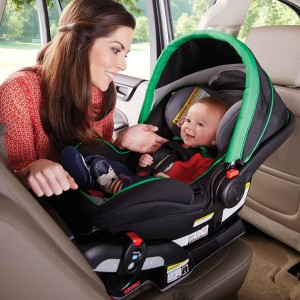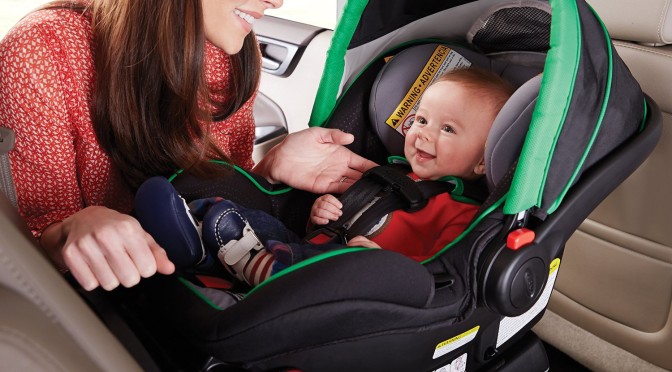 The mom on the left is doing something every mom should do: rear-facing for as long as possible (in this case, in her Graco Click Connect 40)! I’ve written before about reasons to rear-face long past age 2 (ideally to age 4 or more), despite the legal requirement in the US currently being until 1 and the AAP recommended age being barely better at until 2. I’ve also written before about the concept of the orphan seat, where safely-restrained rear-facing children are often the only survivors of severe collisions, leading to the term. However, this is a topic I’m always happy to discuss more, and here is a visual animated depiction of how forces are distributed differently across a child’s body depending on whether she is rear- or forward-facing.
The mom on the left is doing something every mom should do: rear-facing for as long as possible (in this case, in her Graco Click Connect 40)! I’ve written before about reasons to rear-face long past age 2 (ideally to age 4 or more), despite the legal requirement in the US currently being until 1 and the AAP recommended age being barely better at until 2. I’ve also written before about the concept of the orphan seat, where safely-restrained rear-facing children are often the only survivors of severe collisions, leading to the term. However, this is a topic I’m always happy to discuss more, and here is a visual animated depiction of how forces are distributed differently across a child’s body depending on whether she is rear- or forward-facing.
The video shows the significant forces exerted on the shoulder, neck, and head, and how they’re spread over greater areas of the body when rear-facing. There’s a 90% reduction in the risk of serious injuries and death when RF compared to when FF, per the video.
There is no greater killer of children than motor vehicle crashes. Best practices means protecting them the safest way possible, for as long as possible. Even though the US is behind in best practices, when you know better, you do better. And if you read this blog, you know better. Do better. Rear-face as long as possible with seats that make it possible.
—
If you find the information on car safety, recommended car seats, and car seat reviews on this car seat blog helpful, you can shop through this Amazon link for any purchases, car seat-related or not. Canadians can shop through this link for Canadian purchases.

